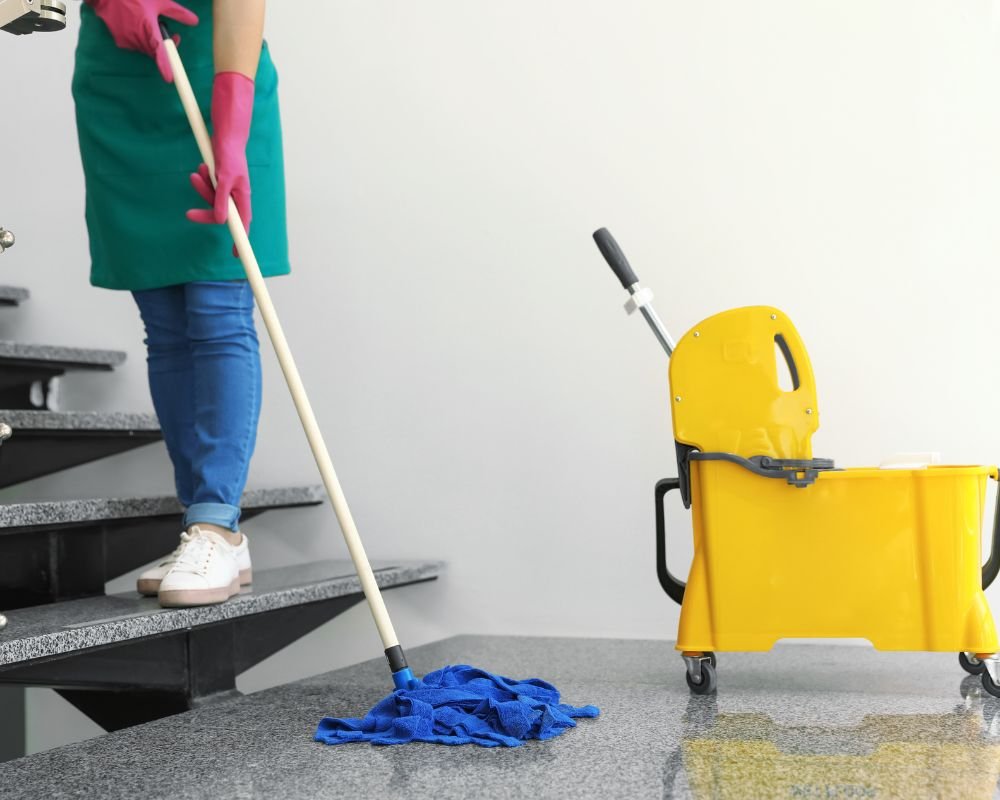Cross contamination is a longstanding concern among companies offering commercial cleaning services. But in recent years, thanks to COVID, more industries have become more concerned about cross contamination. Therefore, we feel it is necessary to address the topic from a cleaning standpoint.
Whether we are cleaning an industrial or business location, a medical facility, or even a bar or restaurant, our teams utilize proven strategies designed to mitigate the risks of cross contamination. This is not to say that it cannot happen. Yet by following established procedures and using the correct tools and supplies, the mistakes that lead to cross contamination can be avoided.
What are those mistakes? He is the most common, especially in medical and food service cleaning:
1. Using Contaminated Cleaning Equipment
Commercial cleaning relies on a variety of equipment to get the job done. Cleaning cloths are used to wipe down surfaces while mops and industrial cleaning machines handle the floors. Cleaners use brooms, dusters, squeegees, and a variety of other tools to do what they do.
The big mistake is not being careful about when and how those tools are used. For example, using a contaminated cleaning cloth on another surface greatly increases the risk of transferring bacteria, germs, and pathogens to that secondary surface. Avoiding this mistake is a matter of establishing procedures governing when and how frequently cleaning equipment should be changed.
2. Using an Inappropriate Cleaning Solution
General purpose cleaning solutions and disinfectants do the job in most environments. But in highly sensitive environments, specialized cleaners may be necessary. One of the commonly made mistakes in this particular area is using a cleaning solution inappropriate to the environment.
For example, the risk of spreading pathogens is minimal in an industrial environment. It is extremely high in a medical environment. Therefore, commercial cleaning services would be expected to utilize appropriate solutions in each type of scenario.
Using an inappropriate cleaning solution allows germs, bacteria, and pathogens to linger. That’s an open door to cross contamination as a cleaning crew moves through a building.
3. Not Using an Appropriate Amount of Product
Hand-in-hand with using an appropriate cleaning solution is using the right amount of product for each scenario. Common sense dictates that a cleaner can use too little, thereby minimizing the product’s impact. But believe it or not, it’s possible to use too much.
Under certain circumstances, too much cleaning solution could prevent a cloth or mop from grabbing and holding on to germs and bacteria. Rather than lifting them away and leaving a clean surface behind, the germs and bacteria remain on the surface, embedded in a film that can be difficult to see.
4. Cleaning Spaces in the Wrong Order
Commercial cleaning services tend to establish an order for cleaning each type of space. For example, a common rule of thumb is to start at the top and work your way down. Going in the other direction could mean cross contamination of lower surfaces while higher surfaces are being cleaned.
There is also the practice of starting with the cleanest spaces first, gradually progressing to the dirtiest spaces. This prevents germs, bacteria, and pathogens from heavily soiled areas from being carried to lightly soiled areas.
Preventing any and all cross contamination isn’t realistic. But it is important to prevent as much of it as possible. That means avoiding the common mistakes that tend to lead to cross contamination. If you manage cleaning in house, rather than contracting with a commercial cleaning company, make sure your staff is aware of cross contamination and the mistakes that are normally associated with it.



